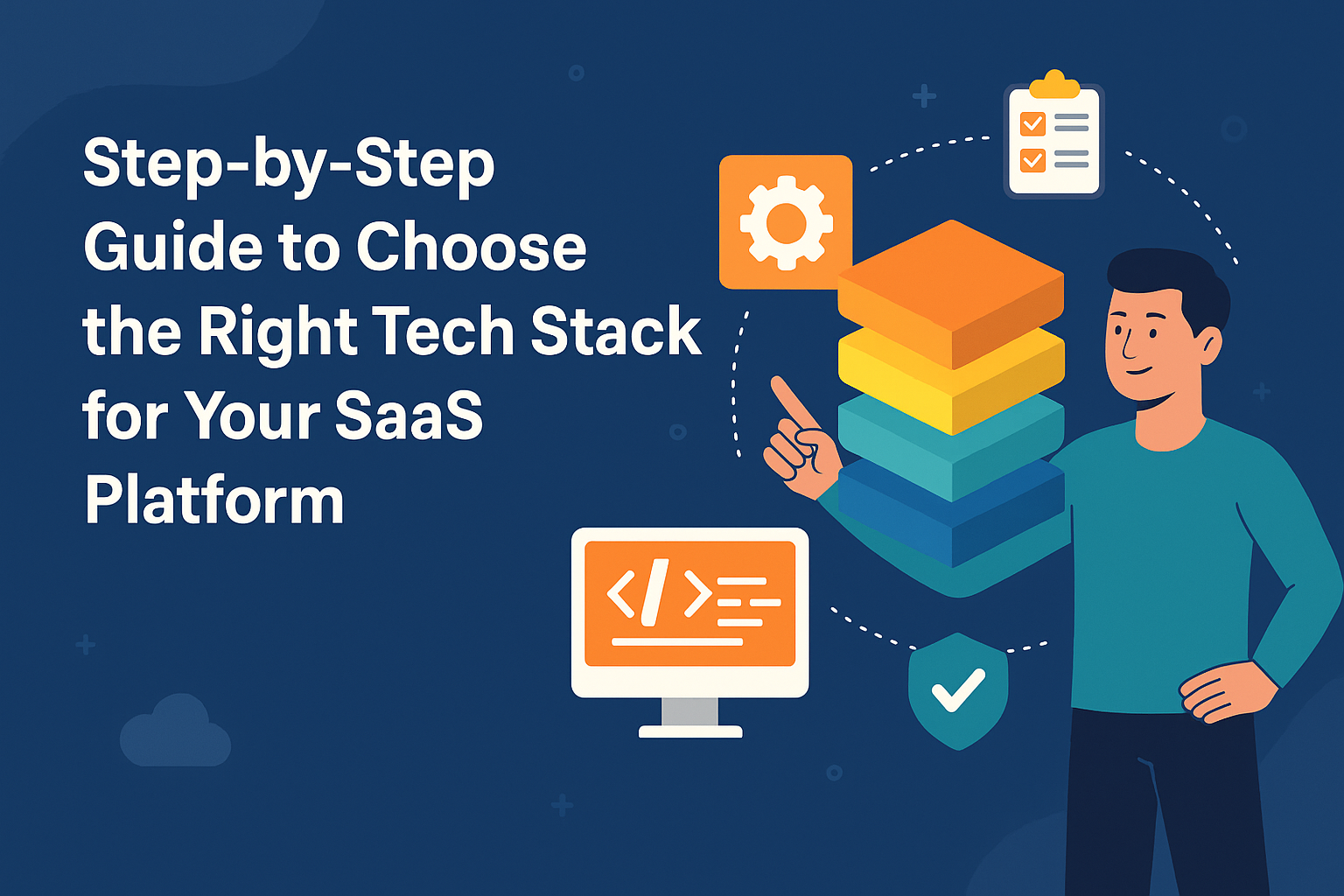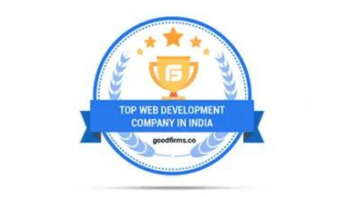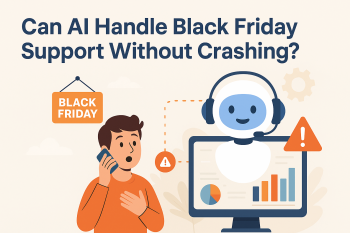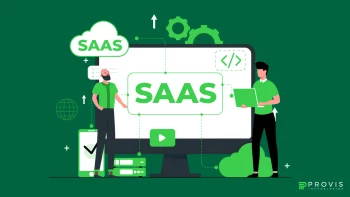Step-by-Step Guide to Choose the Right Tech Stack for Your SaaS Platform
The foundation of every successful SaaS platform isn’t just a great idea – it’s the technology stack that powers it. Your tech stack decision directly affects your speed to the market, long-term scalability, and total cost of ownership.
In this step-by-step guide, you’ll learn how to make the smartest choices when selecting your tech stack for SaaS, from core requirements to DevOps and security. Whether you’re building your MVP or scaling to thousands of users, this guide will walk you through a practical and proven framework.
Want hands-on help building your product? Explore our SaaS Development Services to get expert support tailored to your needs.
We’ll also cover common pitfalls, current tech trends, and real-world case studies so you walk away ready to build a strong, scalable, and cost-efficient platform.
What is the Right Tech Stack?
The right tech stack is a combination of frontend, backend, database, cloud services, and development tools that align with your SaaS product’s current needs and future goals. It should allow fast development, easy scaling, strong security, and smooth integrations while staying within your team’s capabilities and budget.
Choosing the wrong tech stack can create issues that are 10x harder and more expensive to fix later. You may face slow performance, bugs, and security problems that hurt your user experience. On the other hand, the right tech stack for SaaS can give you a real advantage. It allows you to develop features faster, scale easily, and keep your data safe.
The key is finding the balance between proven technologies that reduce risk and modern solutions that provide competitive advantages. Your tech stack should grow with your business, not limit it.
8 Step Tech Stack Selection Process
Step 1: Understand Your SaaS Product’s Core Requirements
Before choosing tools or frameworks, define what your SaaS product is really solving. Ask yourself:
- Does your platform need real-time updates or is it mostly content-driven?
- Will you handle sensitive data (like healthcare or finance)?
- What’s the expected traffic in the first year?
The answers will influence everything from frontend frameworks to database types and compliance needs.
Key tech considerations:
- Real-time needs → WebSockets, event-driven backend, fast DBs (e.g., Redis)
- Static presentation → CDNs, caching (e.g., Cloudflare, Varnish)
- Compliance → HIPAA, SOC 2, GDPR (influences cloud and DB choices)
- Platform delivery → Mobile-first (React Native), Web-first (React/Vue), or Desktop (Electron)
Step 2: Map Out Scalability and Long-Term Growth
SaaS scaling isn’t just about handling more users—it’s about keeping performance steady and costs under control as you grow.
- Start with monolith: Easy to launch for early MVPs
- Scale with microservices: Ideal for independent teams and fast releases
- Multi-tenancy: Choose between single-tenant (secure, costlier) and multi-tenant (shared, cost-efficient)
- Cloud-native setup: Use AWS, GCP, or Azure to enable autoscaling and reduce infrastructure headaches
- Serverless vs. containers: Serverless (e.g., AWS Lambda) for variable workloads, containers (e.g., Docker + Kubernetes) for predictable performance
- Database costs: Plan ahead for read/write-heavy workloads—this often becomes the biggest scaling cost
Step 3: Choose the Right Frontend Stack
Your frontend is your users’ first impression and primary interaction point. Choose technologies that balance developer productivity with user experience.
- React.js – Ideal for dynamic, modern SaaS dashboards
- Angular – Strongly opinionated and great for enterprise-grade apps
- Vue.js – Lightweight and flexible, excellent for startups or MVPs
Add-ons to Consider:
- Tailwind CSS or Material UI – For quick and responsive UI development
- Next.js or Nuxt.js – For server-side rendering and SEO-friendly pages
- PWA support – To give users a mobile-app experience on web
Step 4: Pick a Future-Proof Backend Framework
Your backend handles business logic, data processing, and integrations. Choose frameworks that balance development speed with long-term maintainability.
- Node.js – Great for real-time apps and microservices
- Django (Python) – Rapid development, built-in security features
- Laravel (PHP) – Clean syntax, good for quick backend setup
- Ruby on Rails – Convention over configuration, useful for fast MVPs
Choose frameworks that align with your team’s expertise and support RESTful or GraphQL APIs for easy integration with the frontend.
If you’re working with external development teams, choose ones with proven experience across multiple stacks—especially those skilled in balancing speed, performance, and maintainability.
Step 5: Define Your Database and Storage Layer
Your database setup directly affects app performance and data reliability.
- SQL (PostgreSQL, MySQL, MariaDB) – Best for most SaaS needs; offers strong consistency, complex queries, and JSON support
- NoSQL (MongoDB, DynamoDB) – Use for dynamic schemas and large-scale workloads
- Redis – Ideal for caching, sessions, and fast reads
Storage & Backup:
Use cloud object storage (like S3) for files and static assets. Set up automated backups, geographic redundancy, and define your RTO and RPO early.
Performance Tips:
Apply caching (Redis), CDNs for static content, and read replicas for high traffic. Monitor queries from the start to avoid future slowdowns.
Step 6: Plan DevOps, Deployment, and Security Early
Modern SaaS development demands solid DevOps practices and security protocols from day one.
- Choose Your Cloud Wisely: AWS is feature-rich but complex. GCP is great for AI/ML. Azure suits Microsoft-focused enterprises. Start with one, and scale to multi-cloud if needed.
- Set Up CI/CD: Use GitHub Actions, GitLab CI, or Jenkins to automate testing, builds, and deployments. Include staging environments that mirror production.
- Build a Security Foundation: Implement OAuth 2.0, enforce rate limits, and encrypt data both at rest and in transit. Schedule regular security audits and penetration tests as you grow.
Also Read: Top 15 Software Development Trends to Follow in 2025
Step 7: Identify Third-Party Integration Needs
Most SaaS platforms rely on external tools to enhance functionality and deliver a better user experience. When choosing these tools, prioritize those with strong documentation, reliable uptime, and scalable pricing models.
- CRM Tools: Plan for Salesforce, ZohoCRM, HubSpot or any other integrations via webhooks and APIs.
- Payments: Use Stripe for developer-friendly global payments; PayPal for broad adoption.
- Analytics & Monitoring: Add Mixpanel, Amplitude, or DataDog early to track user behavior and system performance.
Step 8: Choose the Right Development Partner
Building a SaaS platform requires diverse expertise. Whether you’re building in-house or outsourcing, the right development partner can make or break your product.
- Technical Skills: Look for teams with proven SaaS experience—not just general web development. They should understand multi-tenancy, scaling strategies, data security, and complex integrations.
- Communication & Agility: Agile teams that communicate clearly and iterate quickly are essential for fast-moving SaaS development cycles.
- Long-Term Fit: Your initial partner often becomes your long-term tech advisor. Choose a team like Provis Technologies—known for delivering scalable SaaS solutions with continuous support, MVP-to-scale experience, and deep technical consulting expertise.
Common Mistakes SaaS Founders Make When Choosing a Tech Stack
Even great ideas fail with the wrong tech foundation. Here are common pitfalls to avoid:
1. Chasing Trends Instead of Stability
New frameworks pop up frequently. Choose tools with active communities and long-term support (e.g., React, Node.js, Django) instead of relying on unproven or short-lived technologies.
2. Over-Engineering from the Start
Don’t build for millions of users before you’ve validated your idea. Start with a lean stack that’s easy to manage. Netflix and Airbnb scaled after product-market fit—not before.
3. Underestimating Growth
Some stacks work fine at launch but struggle at 10x scale. Plan for user growth, data volume, and concurrency. It’s easier to scale up when your base is solid.
4. Ignoring Performance and Security Early
A 1-second delay in load time can reduce conversions by 7%. Security breaches cost an average of $4.45M. These are hard to fix later—build with performance and protection from day one.
💡 Tip: Tech stack decisions are long-term bets. Talk to a trusted team like Provis Technologies to get it right from the start.
Read More: Top 6 Mistakes to Avoid When Scoping Your SaaS Project
Case Study: How Provis Technologies Helped True Wholesale Transform and Scale
TrueWholesale’s story shows how choosing the right SaaS tech stack and working with the right partner can unlock growth, streamline operations, and deliver measurable results.
The Challenge:
TrueWholesale LLP, a leading B2B sourcing platform for stationery and office supplies in India, depended on traditional sales channels and manual processes. Without a digital storefront, they struggled with fragmented inventory, frequent stock errors, delayed orders, and limited reach. These issues blocked their vision of becoming India’s go-to wholesale platform for retailers.
The Solution:
Provis Technologies partnered with TrueWholesale to build a modern, AI-powered SaaS platform:
- Laravel backend and VueJS frontend for a responsive, scalable experience
- Flutter mobile app for cross-platform accessibility
- AWS Cloud, Algolia Search, Zoho Inventory, and Razor Pay integrations
- Microservices-based architecture for real-time performance
- AI-driven dashboards, marketing-ready storefronts, and a mobile-first experience
- Agile development process from design to deployment
The Results:
- 200% increase in sales post-launch
- Expanded into 4 new regions across India
- Next-day delivery and improved order accuracy by 60%
- A seamless, mobile-first experience that boosted customer loyalty
Client Testimonial:
“When we conceptualized our product, I got many proposals, but we went ahead with Vivek and his team at Provis because I found their approach very professional. They looked at the product not only from a technology point of view but from a business point of view as well.”
— Madhup Bansal, CEO & Co-Founder, TrueWholesale LLP
TrueWholesale’s success shows that smart tech stack choices today lay the groundwork for sustainable growth tomorrow.
The Future of SaaS Tech Stacks
As SaaS products evolve, the foundation they are built on becomes more important than ever. A well-chosen tech stack improves development speed, user experience, and scalability. This could mean adopting serverless architecture, adding AI-ready frameworks, or embedding security from the start. The move toward modular, cloud-native, and secure systems will keep growing. Low-code tools and DevSecOps practices are also maturing.
These help SaaS teams launch faster, innovate often, and respond to market changes with ease. Investing in the right tools now means fewer bottlenecks later. SaaS success depends not just on what you build but how you build it. With the right tech stack and a trusted development partner like Provis Technologies, your product will be ready to compete in a fast-moving market. Need help choosing your stack?
👉 Schedule Your Free Tech Stack Consultation
Related Reads:
• How To Build A Minimal Viable Product (MVP) And Raise Funding In 2025?
• AI in SaaS Product Development: Revolutionizing Software for the Future
• How Edge Computing Is Boosting Website Performance And Security
Frequently Asked Questions (FAQs)
Look for signs like poor load performance, limited scalability, or frequent bugs when adding features. If you find your team struggling to ship fast or integrate new tools, your current stack may be limiting growth. A tech audit can help identify where improvements are needed.
Yes, many SaaS companies start with one stack and evolve over time. The key is to migrate in phases—prioritizing high-impact modules. Start with decoupling your frontend or moving to microservices gradually.
A poor tech stack can lead to higher infrastructure costs, longer development cycles, and expensive rewrites. You may also face missed market opportunities. That’s why early architecture planning is a strategic investment.
Focus on a lean but flexible tech stack for MVP, then plan for modular upgrades. Choose widely supported frameworks that let you prototype quickly but are also scalable—so you’re not forced into a full rebuild later.
We do both. Whether you’re refactoring legacy systems or launching a SaaS from scratch, we help you select, implement, and optimize the right tech stack. Our phased approach ensures stability and scalability.
Written By
Author's Picks
- How Mobile First E-commerce Design Can Boost Conversions in 2025
- 26/04/2025
- How AI Marketing Can Boost Your Business Sales
- 16/02/2025
- 10 Bottlenecks That Slow Your SaaS and How to Fix Them
- 11/07/2025
Categories
- AI for Startups
- AI in Web Development
- AI Integration
- AI Platforms
- AI Prompt
- AI Tools
- AI Trading Software
- Android App
- Android vs iOS Development
- Angular
- API
- API Development
- App
- app development
- App Idea
- App User Feedback
- Application
- Artificial Intelligence
- Audit Services
- Automotive Industry
- Awards and Recognition
- Business Consulting
- Business Website
- Chatbots
- CRM
- CRM for Financial Advisors
- Custom CRM
- Custom SaaS
- Custom Website
- Customer Service
- dashboard design
- Developing a Mobile App
- Digital Business
- E-commerce
- EMR Integration
- Finance
- Financial Advisors
- Financial Advisors
- GIT
- Health Insurance
- iOS App
- iOS App Development
- IoT Mobile App Development
- IoT Platforms
- IT Audit Services
- IT Consulting
- IT Strategies
- Java Development
- Laravel
- Lean Canvas
- Learning Management System
- Logistics Apps
- Mobile App Development
- MVP
- Native App
- News Aggregator Site
- OTT
- Outsourcing IT
- Payment Gateway
- predictive analysis
- Product Launch Strategy
- Progressive Web App (PWA)
- Prototype
- Recommender Systems
- Ruby
- SaaS
- SaaS Application
- SaaS Business
- SaaS Company
- SaaS Development
- SaaS Product
- SaaS Project
- Sales Funnel
- SEO
- Shopping Cart
- Software Development
- SSL and TLS
- Startup Checklist
- Technology
- Tetradic Color Scheme
- UI/UX Design Company
- Unit Testing
- User Flow
- User Testing
- Web Development
- Web Performance Optimization
- website Maintenance Services
- Website Migration Service
- Website Speed Optimization
- WooCommerce
- WordPress





